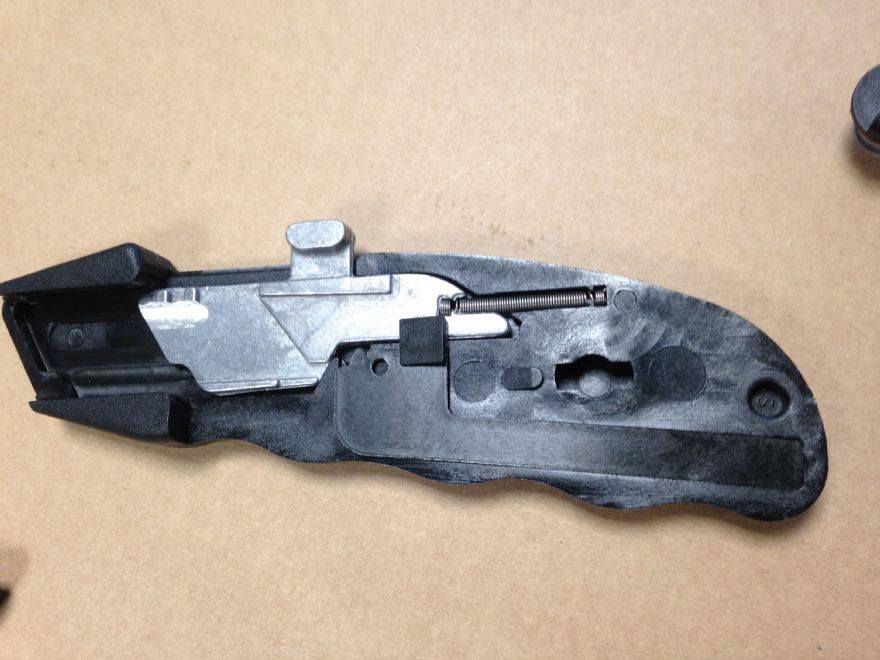
Engineers at the
University of Sheffield Advanced Manufacturing Research Centre (AMRC) have saved a knife manufacturer valuable time and wasted energy by simulating the manufacturing process and estimating the production costs of introducing additive manufacturing (AM) into its production process.
David Harris, general manager of
The Safety Knife Company in Gloucester, said: “We were given a definitive answer that the unit price was going to be prohibitive and that we needed to look in a different direction, but the exercise stopped us wasting our own time and money testing it out ourselves. We never would have got to that conclusive answer on our own without the expertise of the AMRC.”
The Safety Knife Company was formed in 1993 with a license from Bill Ireland who invented his pioneering Fish Safety Knife after a chance encounter with a farmer who had lost an eye when cutting a hay bale string.
Mr Ireland was working as an engineer at Dowty Group at the time and prototyped a knife with a fish-shaped handle which curves around the blade, making it safer to use without compromising functionality.
Originally marketed as a gardening product, The Safety Knife Company products are now a staple of warehouses around the world, and in 2015 Mr Ireland was awarded an MBE in the Queen’s Birthday Honours for services to innovation.
Mr Harris continued: “The product we needed help with is called the ReAkta Knife which has a retractable blade. It was patented around 10 years ago, but we are yet to find a viable way of manufacturing the blade carrier.”
“Originally we had them part-machined and more recently we have had them cast in aluminium. However, both methods have suffered from quality problems and the components need to be fettled manually to achieve the required fit. What we wanted from the AMRC was to research how viable it would be to to 3-D print the blade carrier part.”
A team at the AMRC’s National Metals Technology Centre (NAMTEC) conducted a feasibility study to determine whether Laser Powder Bed Fusion (L-PBF) is a suitable manufacturing process for the aluminium alloy components required for the blade carrier.
Project engineer at NAMTEC, James Cantle, said: “The Safety Knife Company wanted a new manufacturing process that would reduce manual fettling during the assembly stage of production.
“We were able to review component design in line with AM considerations, establish manufacturing process times based on the L-PBF process and use process modelling to identify production levels and the associated cost of manufacture.”
Mr Cantle said they were also able to demonstrate how design principle changes and component modification could open the door to integrating 3-D printed parts. He added: “We suggested some component modification to optimise the manufacturing process. Using honeycombing on the component saved a significant amount of weight and vastly reduced the material required.”
Mr Harris continued: “The project was certainly extremely useful. We already knew the component could be 3-D printed incredibly accurately, but we lacked the ability to determine if it was financially viable for us and it was invaluable to be able to put that task in the hands of people who knew how to find that out.
“Even though the conclusion was that it wasn’t viable, at least we got to a point where we knew it wasn’t an option and it has pushed us down the route of machining the component again.”
He pointed out that the project has also opened his eyes to the future potential of 3-D printing. He added: “AM is certainly on our minds. It is an option for us to consider as we go forward with other projects.”
He concluded: “Who knows what we are going to be doing in terms of product development going forward. However, we know that any type of manufacturing issue that we might have in the future, we always have the option of approaching the AMRC to get its expert help once again.”